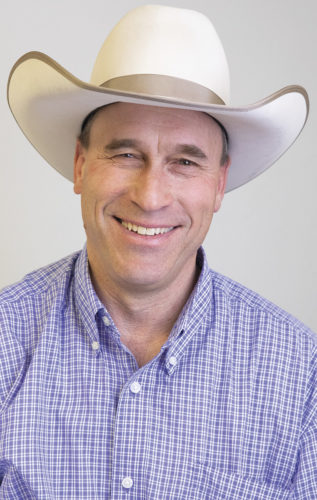For as long as I can remember, I’ve always had a fascination with all things cattle. When I was in grade school, a science fair was held each year where the fifth- and sixth-graders would choose a subject, prepare a presentation and present it to parents and faculty on a special evening.
We got to choose our subjects, but you had to be quick to get the one you wanted because there could be no duplicate projects. I remember being quite disappointed and, frankly, a little ticked off when one of my friends, who lived on a dairy farm no less, picked beef cattle as his project when we were in fifth grade. The next year, though, I was at the front of the line and was able to use beef cattle as my sixth-grade science fair project topic.
The subject was already my passion, but I immersed myself in memorizing details about every breed so I could come off as the resident expert during my presentation at the science fair.
Every breed intrigued me in some way. I still remember Tom Lasater’s six essentials when he developed Beefmasters and the mantra “hide color doesn’t matter when the T-bone’s on the platter.”
I could easily recite the story of Warren Gammon from Iowa and how he pursued the development of Polled Herefords. I knew the country of origin of every continental breed and each breed’s distinctive characteristics.
This was way back in the day when Chianina cattle were white, Gelbvieh and Limousin were red, and Simmentals were spotted. I wanted to have a few of every one of them.
Christmas morning didn’t excite me any more than the day Dean Baker delivered a Charolais bull to our place to put with our Hereford cows. It was even better the next spring when the calves of a different color arrived.
A few years later, we infused a little Simmental and Angus into the mix. It was about this time, too, that black baldies started to become the predominant calves in our country as more and more of our neighbors bred their Hereford cows to Angus bulls.
I loved the different cattle and how they changed the landscape of the industry – aesthetically, metaphorically and literally.
And though the cattle business has continued to evolve, hopefully in the constant pursuit of a consistent product for the consumer, each breed and type of cattle has in some way accented and contributed to that positive evolution.
Like my grade school science fair project, the assignment I’ve been working on for the past couple of years is equally intriguing to me. I lived in Germany for a short time and became familiar with the culture and fluent in the language. (That fluency has sadly atrophied over the past 25 years.)
My mother and her sisters have lovingly tasked me with translating – from German to English – the letters between my grandfather and grandmother that were written before their marriage.
My grandfather’s family had come from Germany to the U.S. shortly before his birth and eventually ended up raising registered Herefords in Elko County, Nevada.
As a young man, my grandfather spent a couple of years in Germany, where he met a pretty teenaged girl whom he would later bring back to America’s Great Basin as a rancher’s wife.
Before he returned to Germany to retrieve his bride, my future grandparents corresponded regularly with letters.
I never knew my grandfather. He was killed in a shop accident before my parents were married, so my translation project has given me insight into the kind of man he was, and why my grandma was so devoted to him and the life they forged together, even 40 years after his death.
Grandma was a small lady who raised eight children on dry farms and ranches in Nevada and Utah, in large part by herself after her husband’s death.
She came to the U.S. in May of 1939 on one of the last ships that left Nazi Germany before the outbreak of World War II.
Her grasp of the English language was remarkable. Her grammar was impeccable, though her unmistakable thick German accent always accompanied her soft voice. Though she held fast to her German roots, she had a deep and abiding love for America and was able to pass these qualities on.
Especially at this time of year, I am reverently thankful for that. Of the Gettysburg address, she said, “It is the greatest assemblage of words in the English language.” (Parenthetically, that is part of the reason I’ve made it a goal to memorize the Gettysburg Address by the fourth of July this year, and would advise any American to do the same.)
Just as the influences of different breeds have enhanced and accented the U.S. beef industry, the influences and ideas of myriad cultures and nations, and the freedom to express those ideas and ideals, have helped to shape and mold the most powerful economic society the world has ever known.
The wisdom and sacrifice of those who came before us have made it so. I hope it can always remain so. I believe it can and will if we, as a nation, stay true to the course of our forebears.
It is now our duty, as Mr. Lincoln so eloquently stated in the closing lines of his speech at Gettysburg: “It is rather for us to be here dedicated to that great task remaining before us … that government of the people, by the people, for the people, shall not perish from the earth. ”





